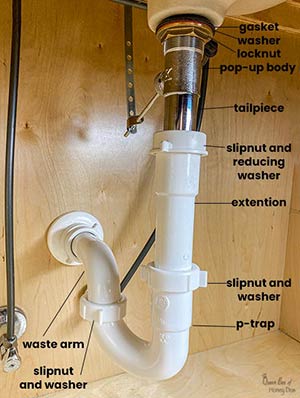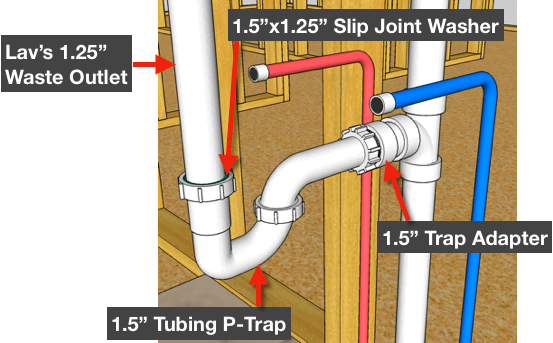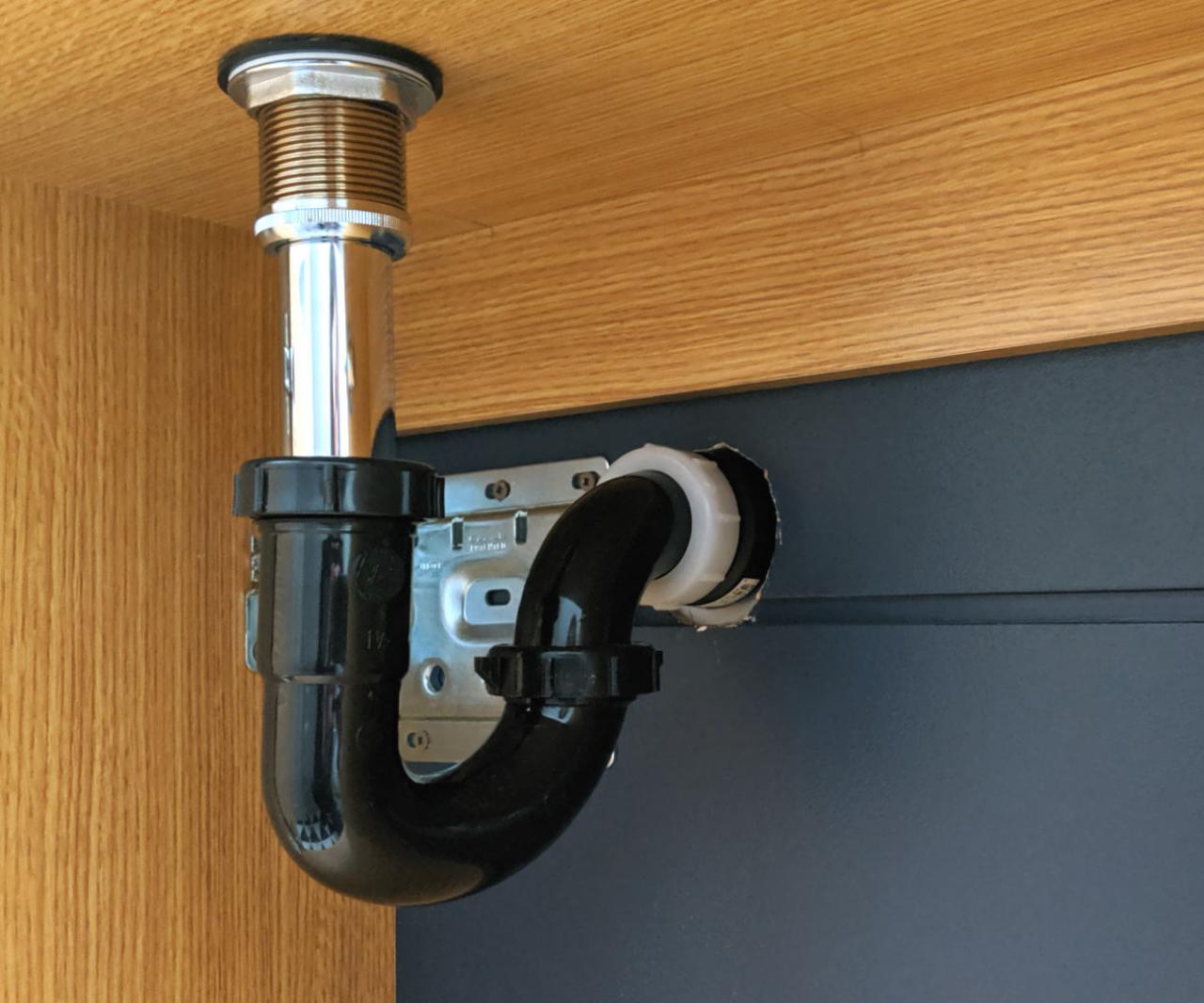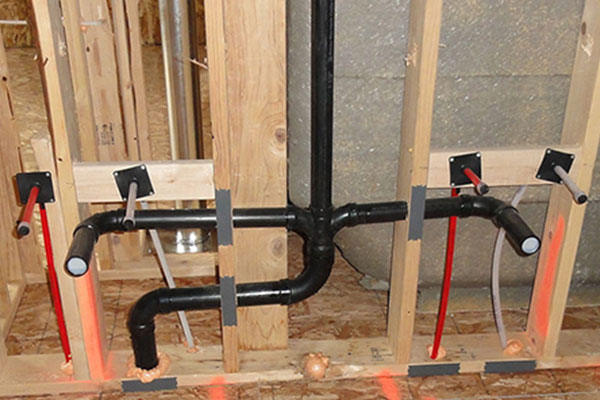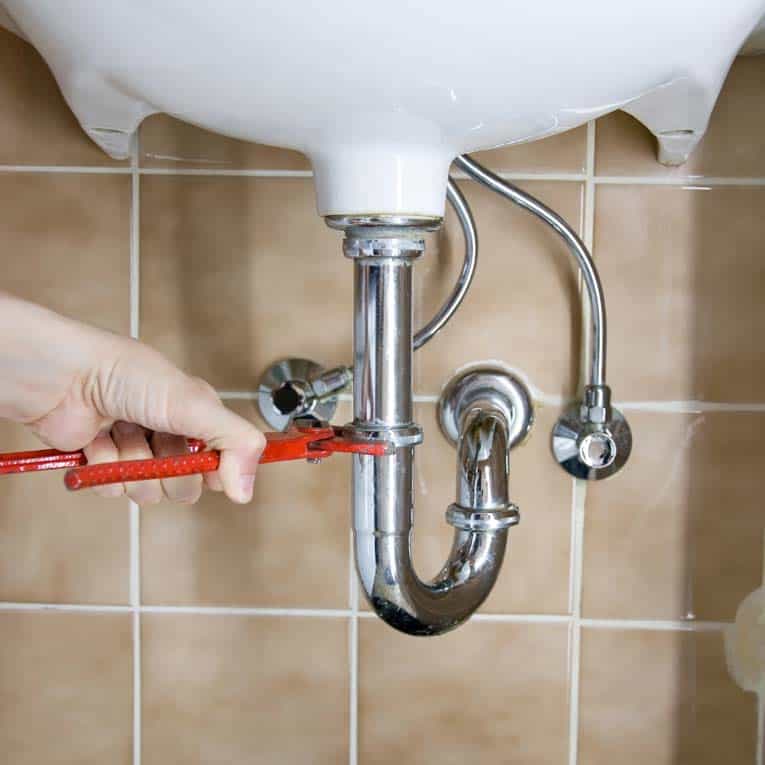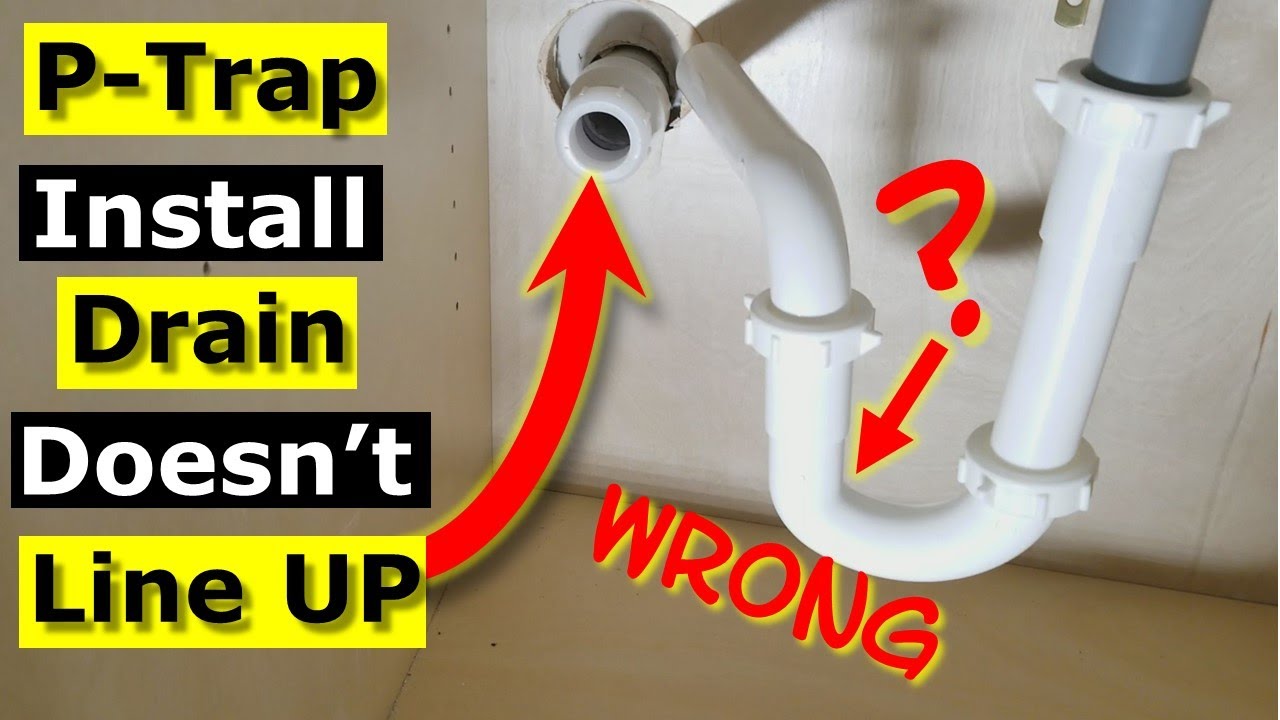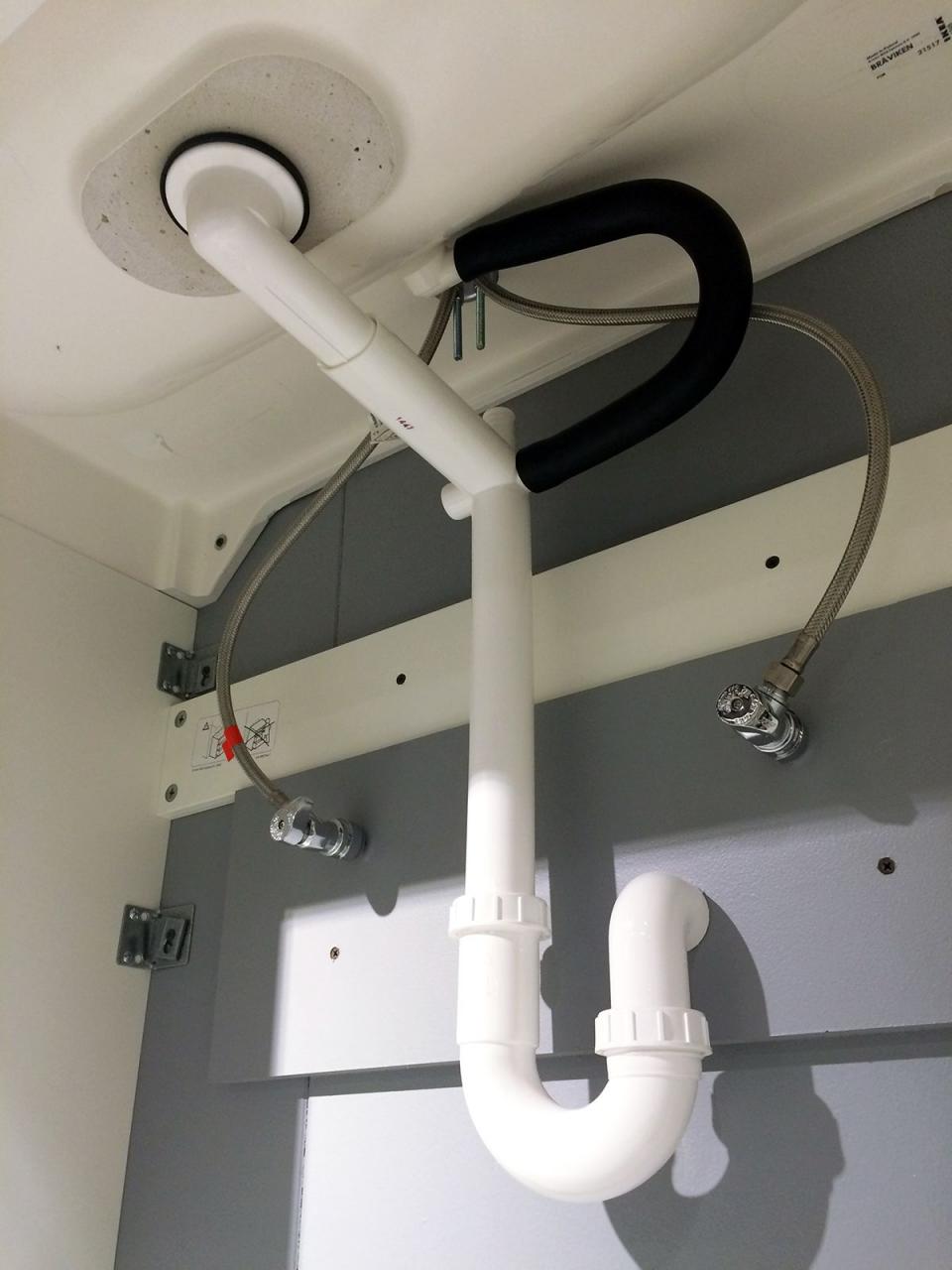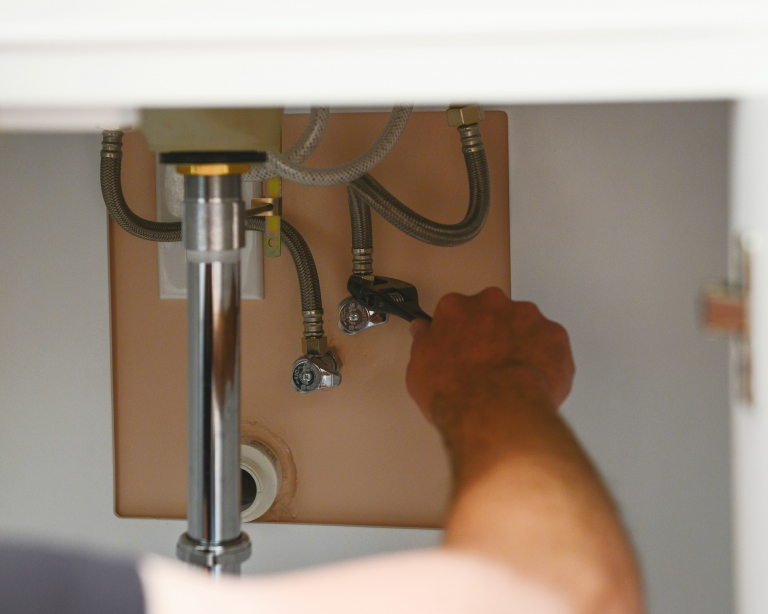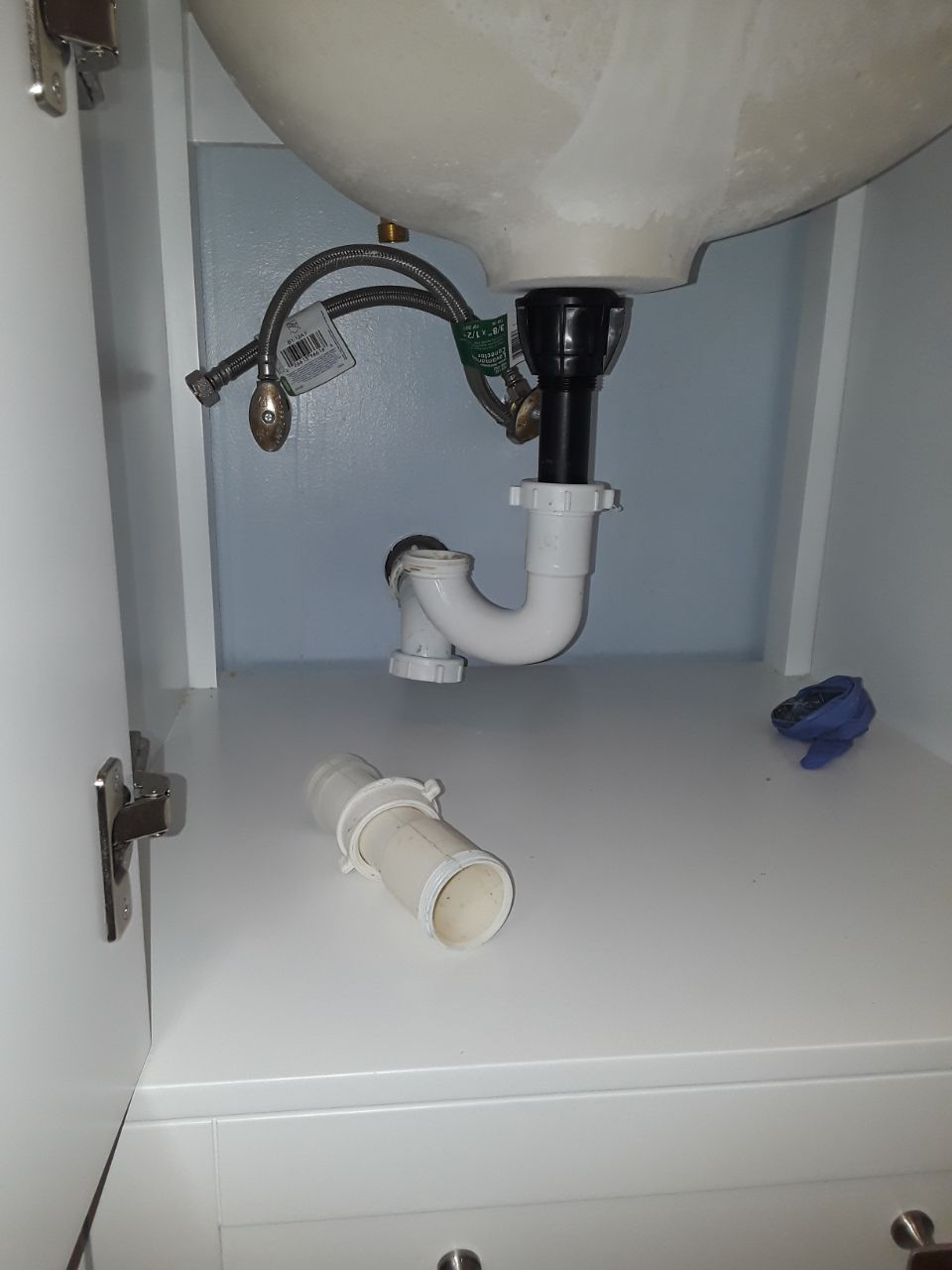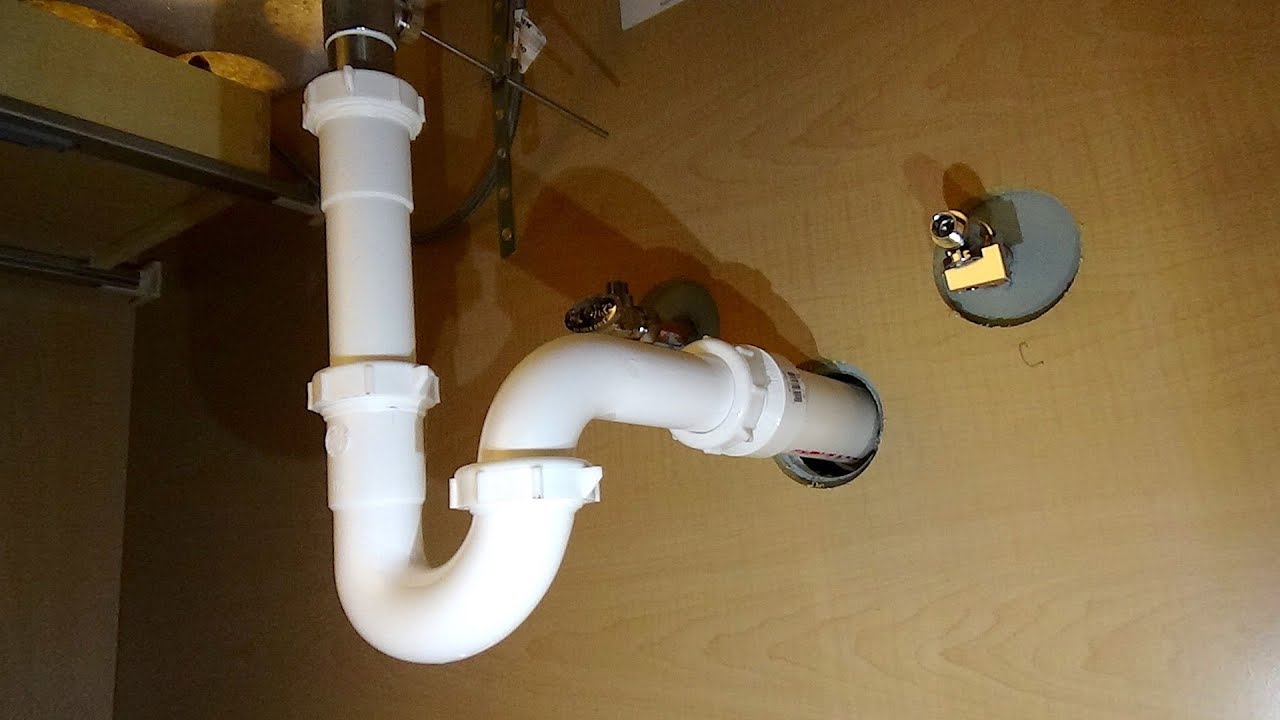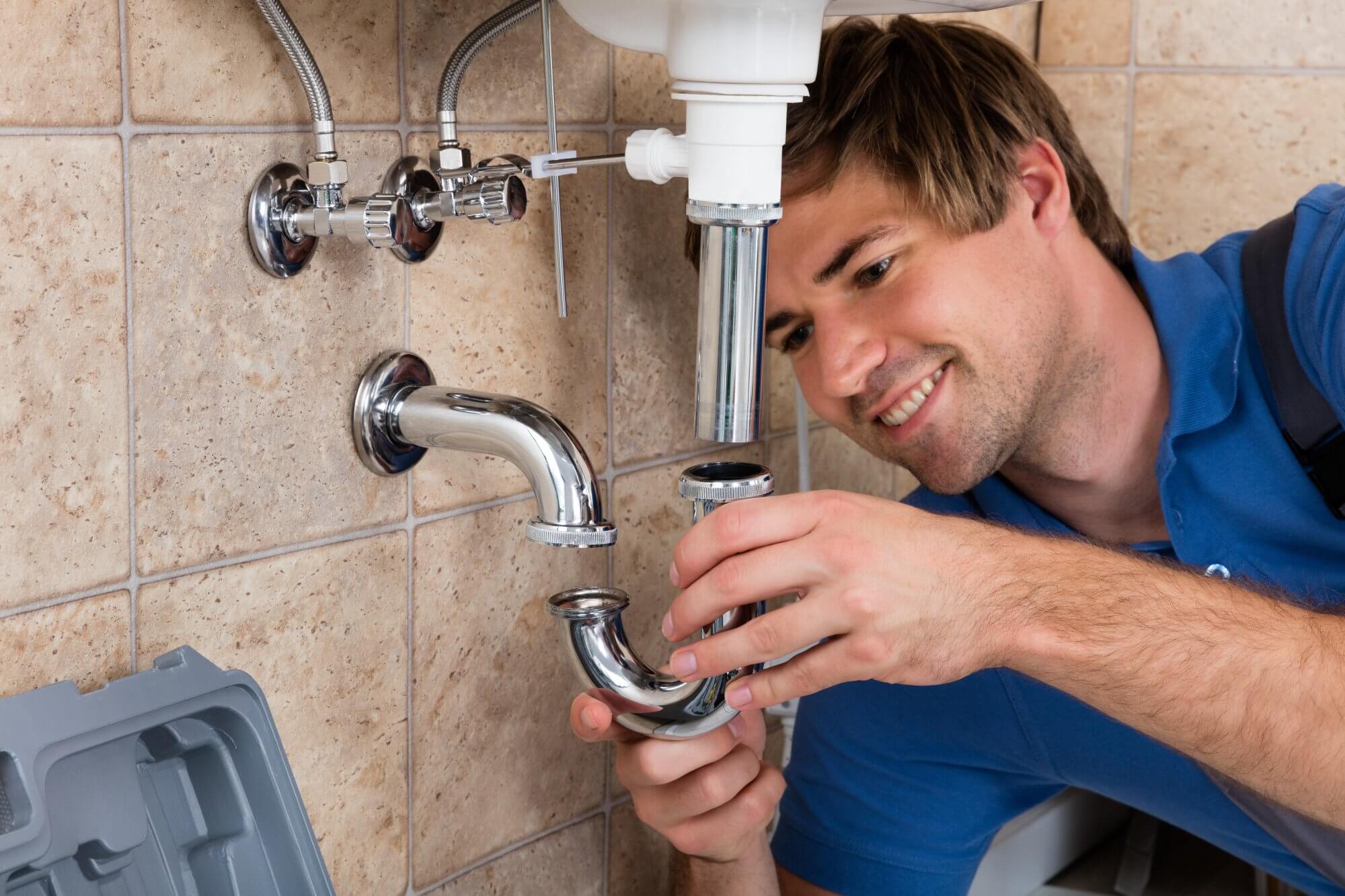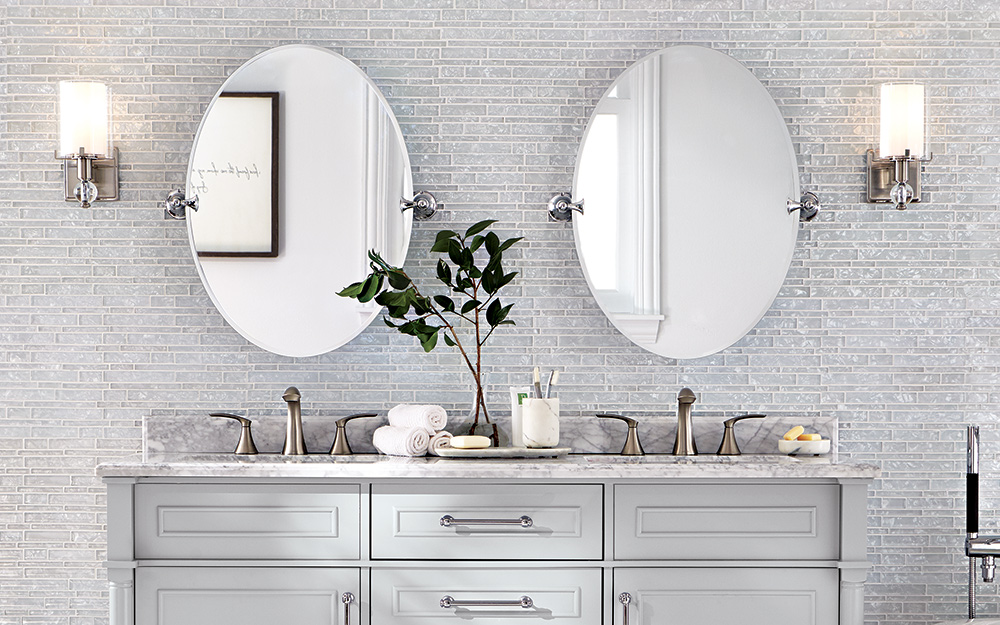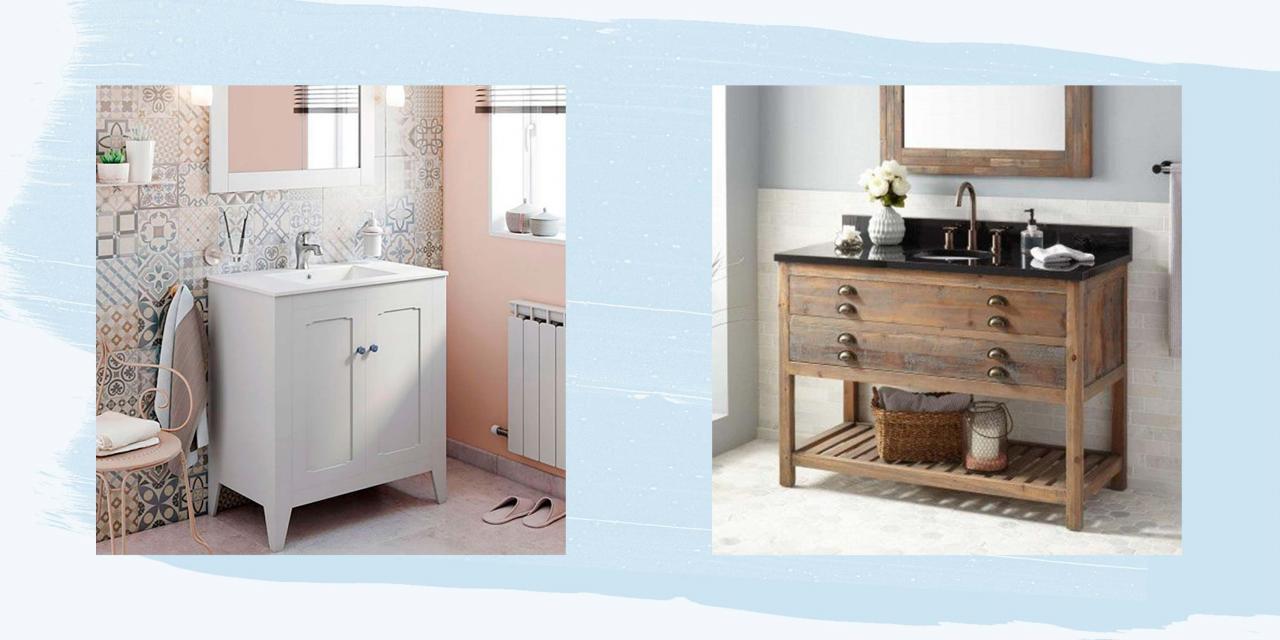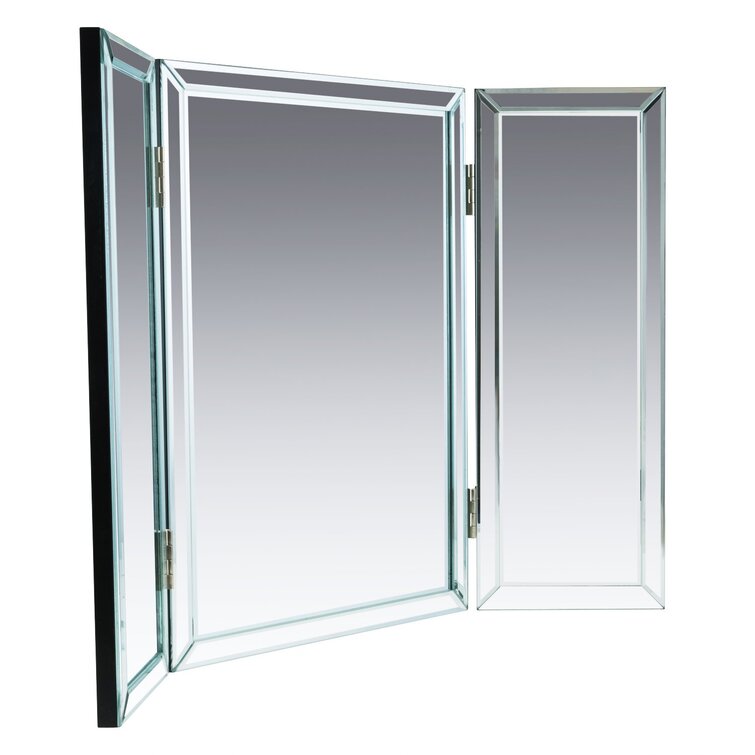Understanding the Basics of Bathroom Vanity Plumbing
When it comes to bathroom renovations, understanding the basics of bathroom vanity plumbing is crucial. Proper plumbing ensures that your bathroom vanity functions efficiently and prevents any potential issues down the line. Let’s discuss the fundamental aspects of bathroom vanity plumbing and provide you with the knowledge you need to make informed decisions.
- Water Supply and Drainage: The water supply and drainage systems are the backbone of any bathroom vanity plumbing. The water supply lines provide clean water to the faucet, while the drainage system carries away waste water. It is important to ensure that the water supply lines are properly connected and that the drainage system is free from any clogs or leaks. Regular maintenance and inspections are key to keeping these components in optimal condition.
- Ventilation: Proper ventilation is essential for bathroom vanity plumbing. Ventilation systems help remove excess moisture and odors, preventing the growth of mold and mildew. Installing an exhaust fan or a ventilation system that connects to the outside can greatly improve air circulation, keeping your bathroom vanity area clean and fresh.
- Traps and P-traps: Traps and P-traps are vital components of bathroom vanity plumbing. These devices are designed to prevent sewer gases from entering your bathroom and provide a water seal to prevent odors. It is important to regularly clean and maintain these traps to ensure that they function properly and prevent any foul smells from permeating your bathroom.
- Shut-off Valves: Shut-off valves are crucial for bathroom vanity plumbing, as they allow you to control the flow of water to your vanity. These valves are typically located under the sink or near the main water supply line. It is important to know where these shut-off valves are located and how to operate them, as they can be a lifesaver in case of emergencies or repairs.
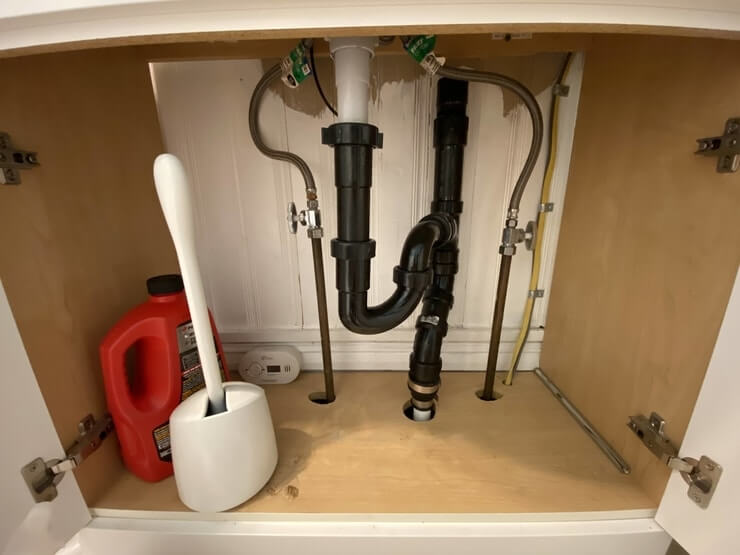
Essential Tips for Installing a Bathroom Vanity and Plumbing
Installing a bathroom vanity and plumbing can be a daunting task, but with the right knowledge and preparation, it can be a rewarding DIY project. We will provide you with essential tips and guidelines to help you successfully install a bathroom vanity and tackle the associated plumbing.
Measure and Plan: Before starting the installation process, it is crucial to measure your bathroom space and plan accordingly. Ensure that the vanity you choose fits comfortably in the designated area and allows for proper clearance. Take into consideration the location of existing plumbing lines, electrical outlets, and any other fixtures that may impact the installation.
Disconnect and Remove Old Vanity: If you are replacing an existing vanity, begin by disconnecting and removing the old one. Shut off the water supply, disconnect the plumbing connections, and carefully remove the vanity from the wall. Take this opportunity to inspect the existing plumbing and make any necessary repairs or upgrades.
Install New Vanity: Once the old vanity is removed, it’s time to install the new one. Begin by securing the vanity to the wall using screws or brackets, ensuring it is level and secure. Connect the plumbing lines, including the water supply lines and drain pipe, following the manufacturer’s instructions. Double-check all connections for leaks before proceeding.
Test and Adjust: After the installation is complete, turn on the water supply and test the vanity for any leaks or issues. Check the drainage system to ensure proper flow and functionality. Make any necessary adjustments or repairs before finalizing the installation.
Finishing Touches: To complete the installation, add any finishing touches such as installing the faucet, connecting the sink to the vanity, and sealing any gaps or joints. Take the time to clean and polish the vanity to give it a polished and professional look.
Common Plumbing Issues with Bathroom Vanities and How to Fix Them
Plumbing issues with bathroom vanities can be frustrating and disruptive. Understanding the common problems that can arise and how to fix them can save you time, money, and headaches. We will discuss some of the most common plumbing issues with bathroom vanities and provide you with practical solutions to resolve them.
Leaky Faucets: One of the most common plumbing issues with bathroom vanities is a leaky faucet. Leaks can waste water, cause damage to your vanity, and increase your water bill. To fix a leaky faucet, start by turning off the water supply. Replace any worn-out or damaged parts, such as washers or O-rings, and reassemble the faucet. Test for leaks and make any necessary adjustments.
Clogged Drains: Clogged drains are another frequent plumbing problem in bathroom vanities. Hair, soap residue, and other debris can accumulate over time, causing slow drainage or complete blockages. To unclog a drain, start by using a plunger to create suction and dislodge the clog. If the clog persists, try using a drain snake or a mixture of baking soda and vinegar to dissolve the blockage. Regular maintenance, such as using drain screens and periodically cleaning the drain, can help prevent clogs.
Low Water Pressure: Low water pressure can be frustrating when using your bathroom vanity. The issue may be caused by mineral deposits, a faulty water supply line, or a partially closed shut-off valve. To fix low water pressure, start by checking the shut-off valve and ensuring it is fully open. Clean or replace any clogged aerators or showerheads. If the problem persists, it may be necessary to call a professional plumber to inspect and repair the water supply lines.
Running Toilet: A running toilet is not only annoying but also wastes water. The issue may be due to a faulty flapper valve, a worn-out fill valve, or a misaligned flush handle. To fix a running toilet, start by inspecting the flapper valve and replacing it if necessary. Adjust the fill valve to ensure the water level is correct. If the problem persists, consider calling a plumber to diagnose and repair the issue.
Upgrading Your Bathroom Vanity Plumbing
Upgrading your bathroom vanity plumbing can enhance the functionality, efficiency, and aesthetics of your bathroom. Whether you are remodeling your bathroom or simply looking to improve your current vanity setup, we will provide you with essential information on upgrading your bathroom vanity plumbing.
Assess Your Needs: Before embarking on any upgrades, assess your needs and determine what improvements you want to make. Do you need additional storage space? Are you looking to install double sinks? Are you considering adding new fixtures or accessories? Understanding your requirements will help you plan your upgrades effectively.
Plan the Layout: Once you have identified your needs, plan the layout of your bathroom vanity plumbing. Consider the location of existing water supply lines, drainage systems, and electrical outlets. Determine if any modifications or rerouting is needed to accommodate your desired upgrades. Consult a professional plumber if necessary to ensure the feasibility and safety of your plans.
Choose High-Quality Materials: When upgrading your bathroom vanity plumbing, it is essential to choose high-quality materials that are durable and built to last. Select water-resistant materials for your vanity, such as moisture-resistant plywood or solid wood. Invest in reliable faucets, drains, and pipes to avoid future plumbing issues and leaks.
Consider Energy Efficiency: Upgrading your bathroom vanity plumbing is an excellent opportunity to consider energy-efficient options. Look for faucets and fixtures with low-flow technology to conserve water. Install LED lighting or energy-efficient bulbs to reduce electricity consumption. These small changes can make a significant impact on your energy bills and contribute to a greener home.
Hire a Professional: While some upgrades can be done as DIY projects, it is advisable to hire a professional plumber for complex plumbing tasks. A professional can ensure that the upgrades are done correctly, comply with building codes, and minimize the risk of leaks or damage to your bathroom. Additionally, they can provide valuable advice and recommendations based on their expertise.
Maximizing Space and Efficiency: Plumbing Solutions for Small Bathroom Vanities
Small bathroom vanities can present unique challenges when it comes to plumbing. However, with the right plumbing solutions, you can maximize space and efficiency in your small bathroom. Below are various plumbing solutions specifically designed for small bathroom vanities.
Wall-Mounted Faucets: Wall-mounted faucets are an excellent solution for small bathroom vanities as they save valuable counter space. By installing the faucet on the wall above the sink, you free up space for other essential items. Additionally, wall-mounted faucets can create a sleek and modern look in your bathroom.
Compact Vanity and Sink Combos: Opting for a compact vanity and sink combo is another effective plumbing solution for small bathroom vanities. These combo units are designed to maximize space by offering a smaller footprint while still providing essential storage and functionality. Look for vanities with built-in shelves or drawers to optimize storage options.
Corner Sinks: If your bathroom layout allows for it, consider installing a corner sink. Corner sinks are specifically designed to fit snugly into the corner of a bathroom, making efficient use of space that would otherwise go unused. They can be paired with a compact vanity or wall-mounted storage options to further maximize space.
Space-Saving Plumbing Fixtures: Choosing space-saving plumbing fixtures can greatly benefit small bathroom vanities. Look for toilets with a compact design, such as wall-mounted or corner toilets. These fixtures take up less floor space and create a visually open and spacious bathroom. Additionally, consider using narrow or shallow sinks that still provide functionality without occupying excessive space.
Creative Storage Solutions: In small bathroom vanities, storage can be a challenge. Consider incorporating creative storage solutions to maximize space. Utilize vertical space by installing shelves or cabinets above the vanity or on the walls. Use storage baskets or bins to keep items organized and easily accessible. By keeping the vanity area clutter-free, you can create the illusion of more space.
Professional Consultation: If you’re unsure about the best plumbing solutions for your small bathroom vanity, it is advisable to consult with a professional plumber or a bathroom designer. They can provide expert advice and help you find creative solutions that suit your specific needs and space limitations. A professional can also ensure that the plumbing is installed correctly and meets all necessary building codes.
How to Connect a Bathroom Sink Drain – HomeTips
P-Trap Installation Drain Doesnu2019t Line Up Bathroom Sink Pipe
Space saving plumbing from Ikea Ikea bathroom vanity, Ikea
How-To Install a New Bathroom Vanity! – Yellow Brick Home
plumbing – New vanity doesnu0027t leave room for old J trap – how
How to Plumb a Drain – Sink Drain Pipes
Best Way to Clean a Bathroom Sink Drain – Eyman Plumbing Heating u0026 Air
Related Posts:
- Bathroom Vanity 20 Inch
- Menards Granite Bathroom Vanity Tops
- 34 Inch Wide Bathroom Vanity
- How To Install A Bathroom Vanity And Sink
- Menards Bathroom Vanity Countertops
- 72 Bathroom Vanity Single Sink
- Bathroom Vanity Cabinet Set
- Curved Front Bathroom Vanity
- Bathroom Vanity Repair
- Bathroom Vanity Cabinets With Legs
